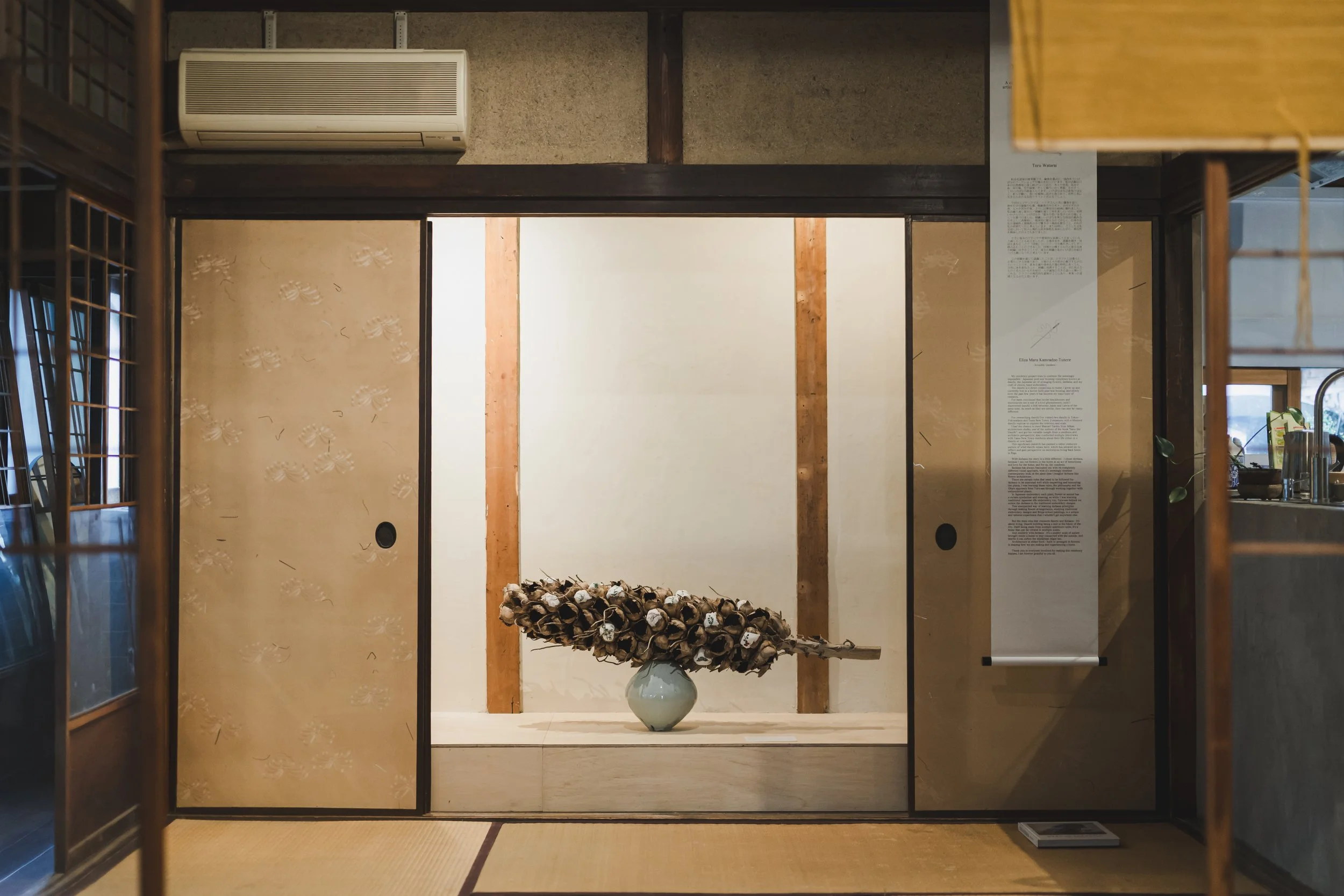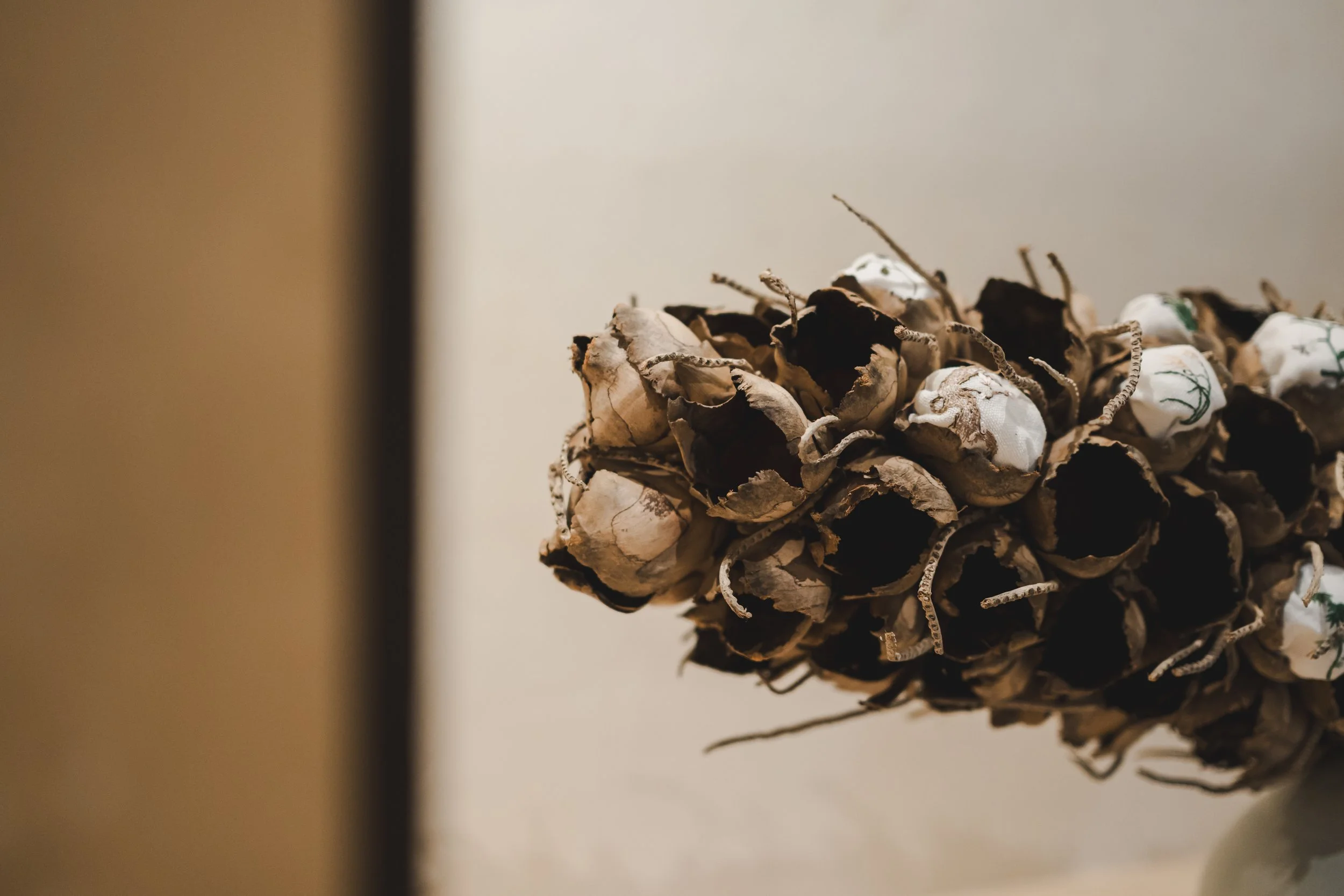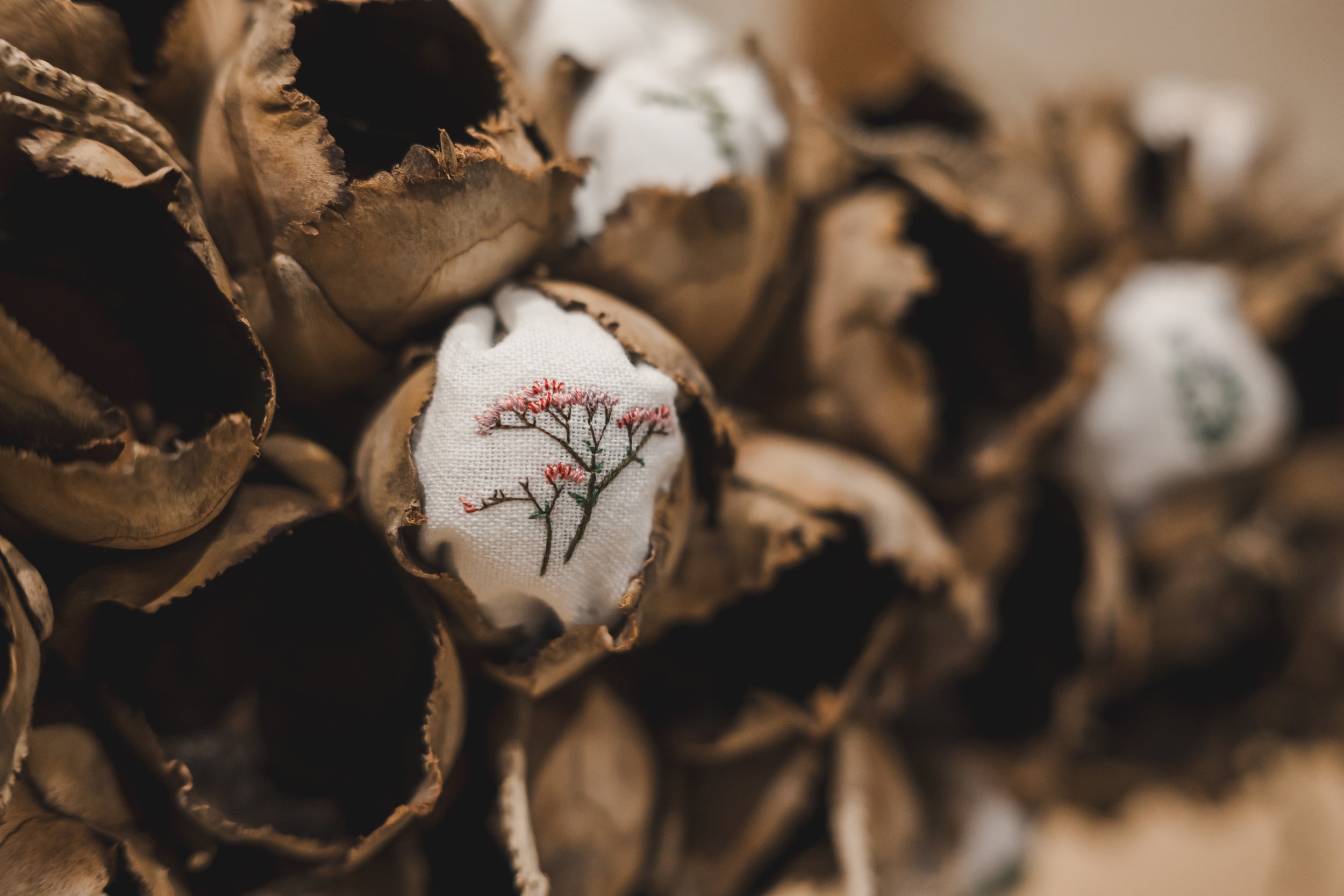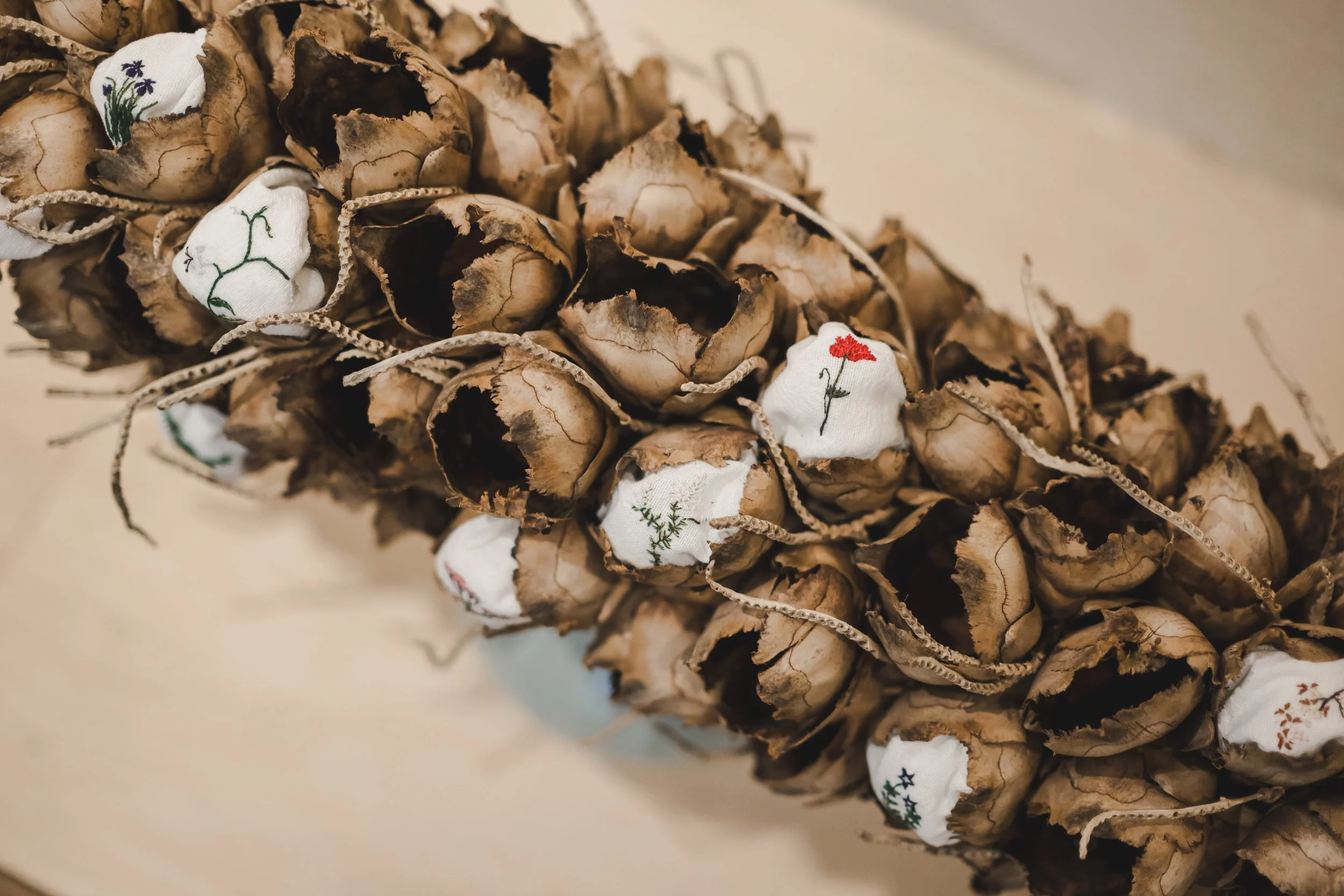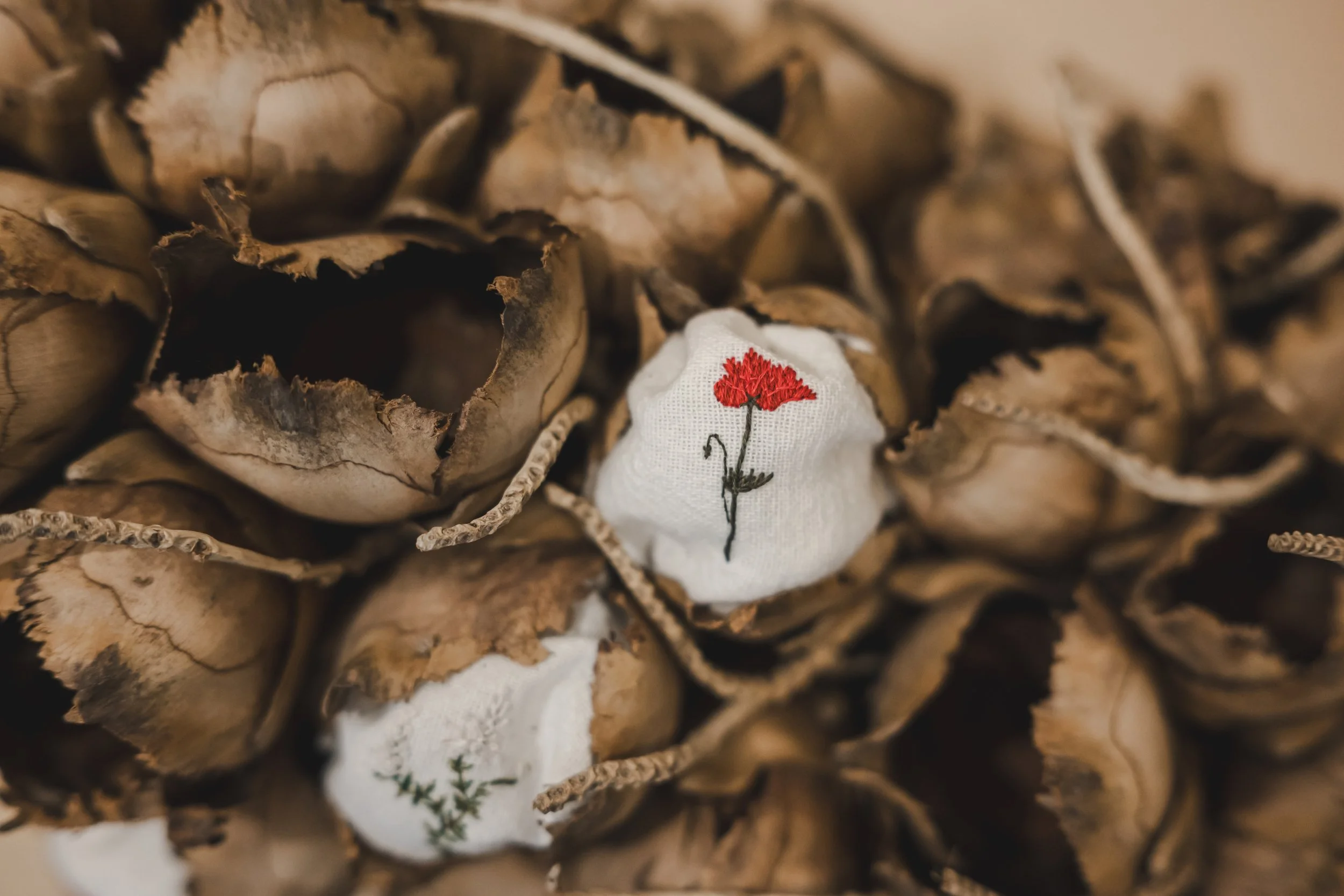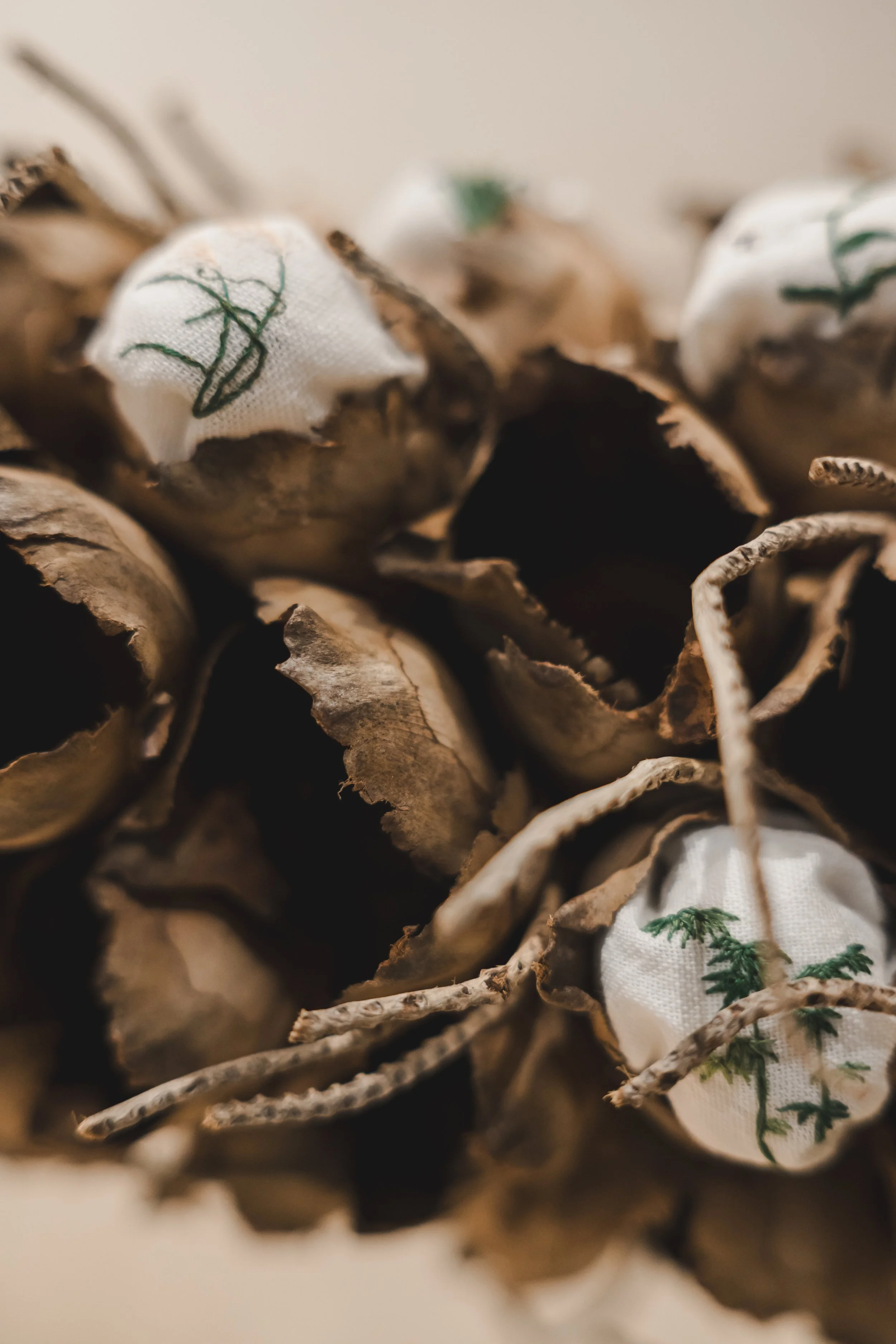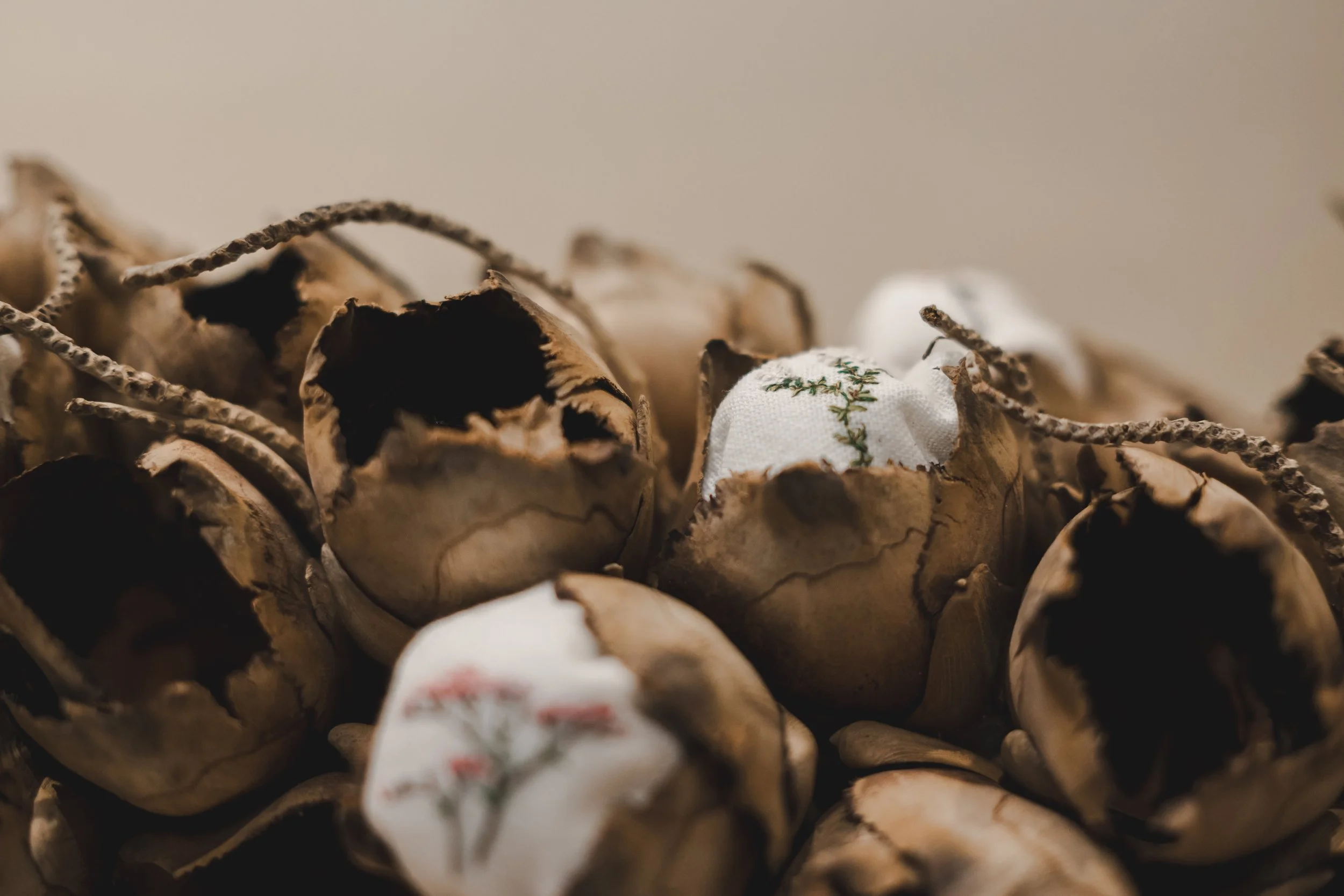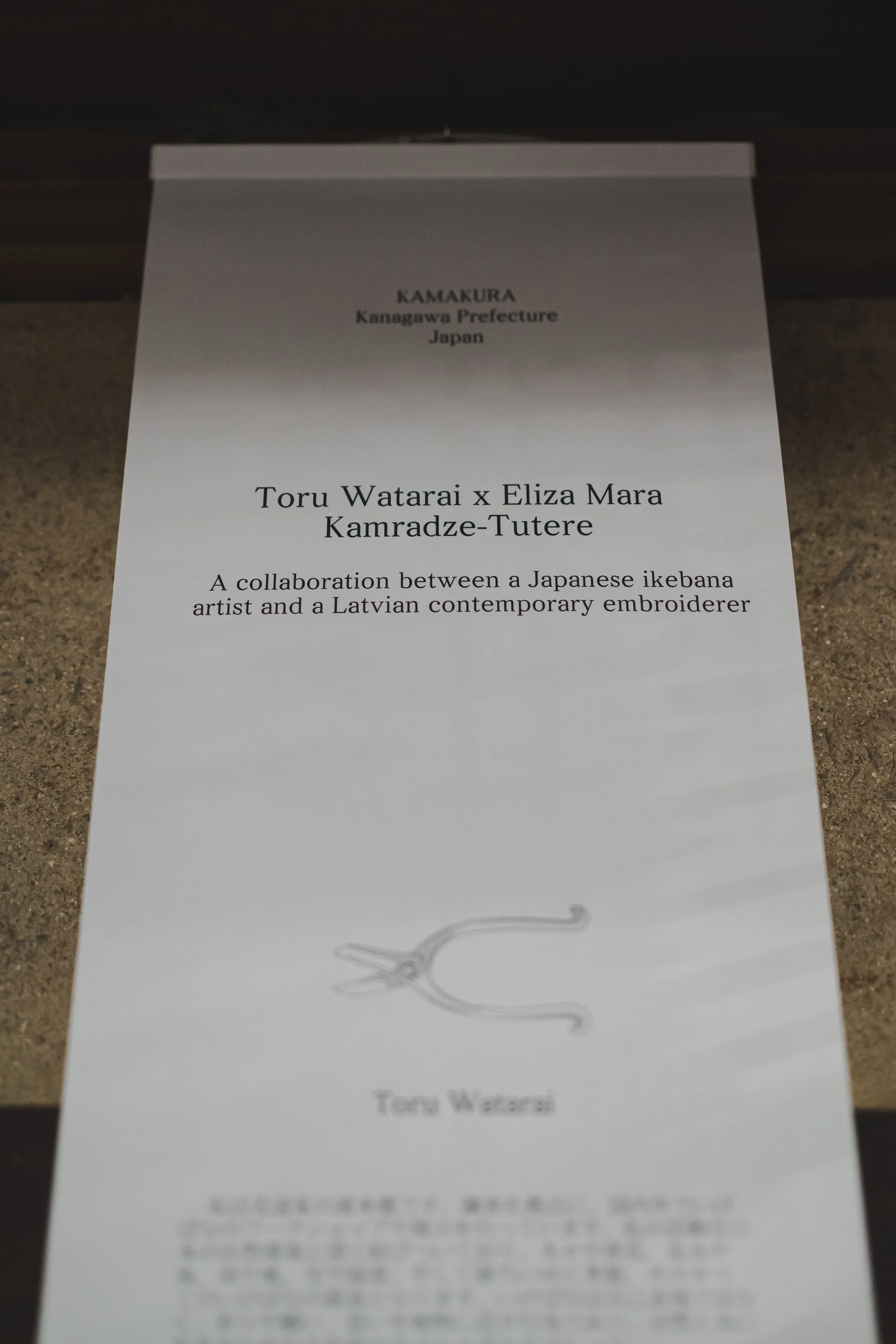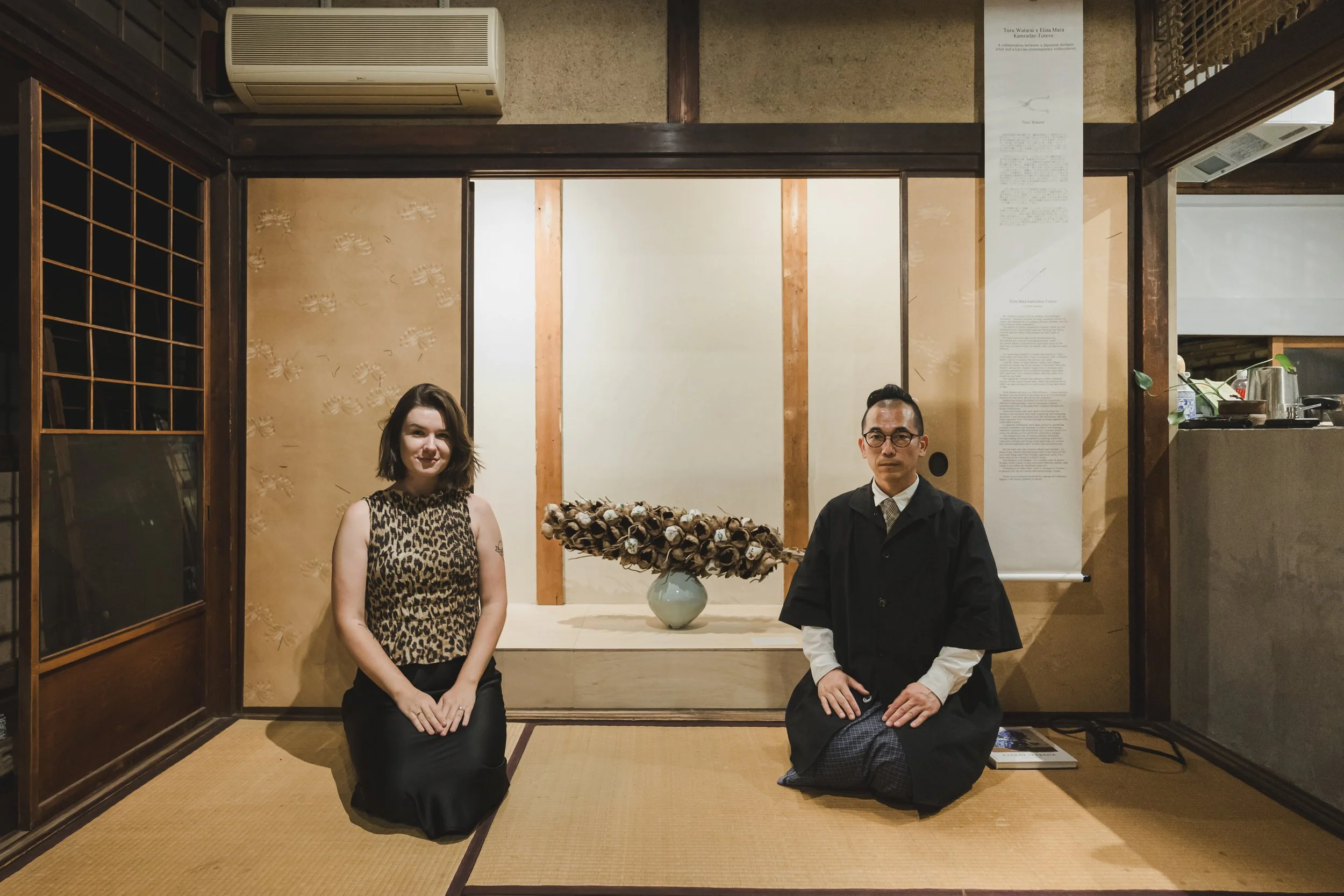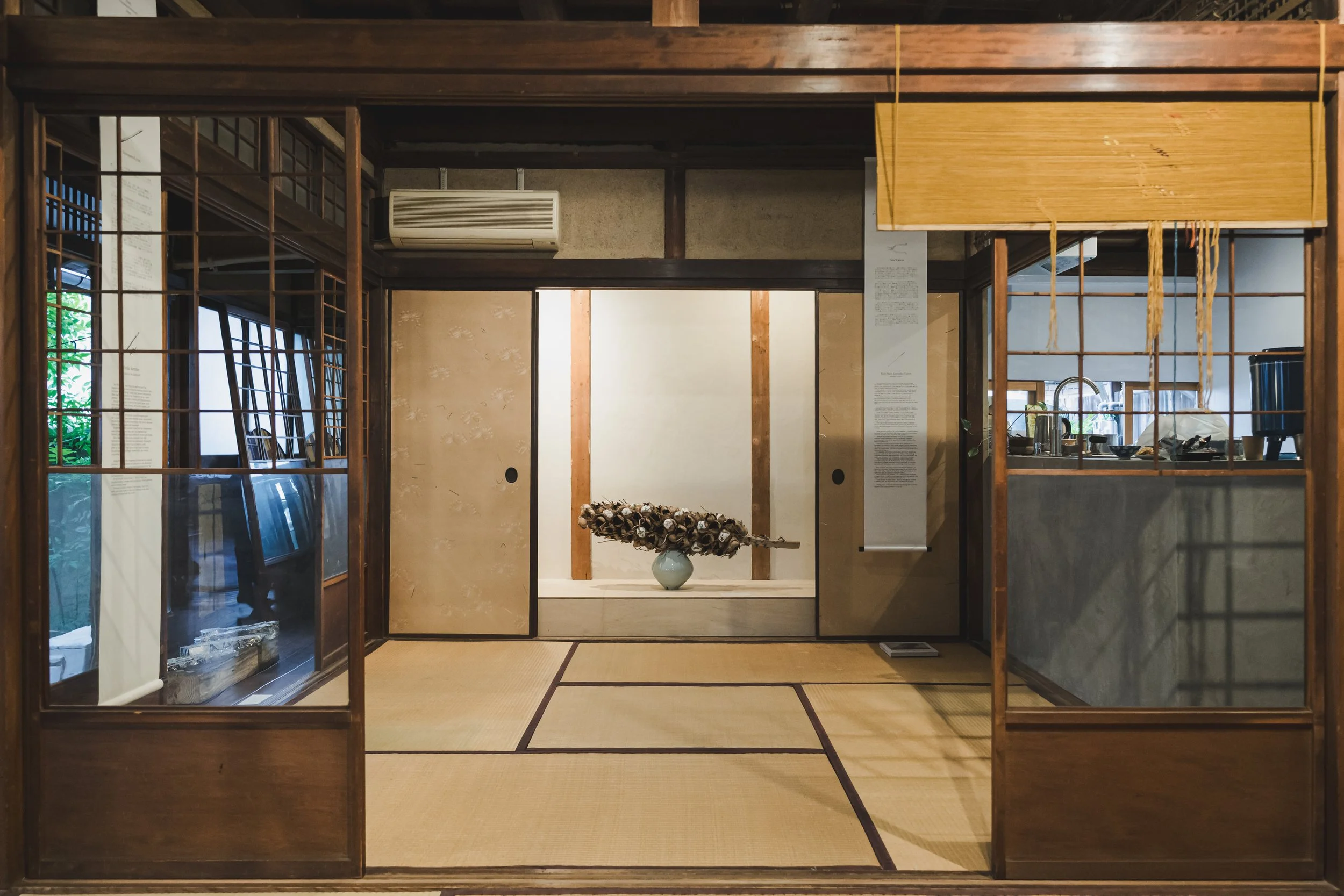Invisible Gardens
As part of the World Expo in Osaka, the European Union Pavilion invited Knotto to curate an open-call throughout Europe. Following this competition, five national artists, designers, craftsmen and curators were selected for a one-month residency in Japan during the World Expo. Each of the participants has worked in close collaboration with a Japanese craftsman, with the aim of producing a joint research project rooted in our different cultures.
The Osaka Expo is an ideal opportunity to highlight the many problems raised by the fashion industry, to analyze the current state of craftsmanship in Europe and Japan, and to see how ancestral knowledge, people and design can work hand in hand to offer sustainable visions to heal the existing fashion and textile industry.
The theme «Artisanal Intelligence» has been chosen as a statement to highlight the urgent need to preserve the work of the hand, ancestral knowledge and the human beings behind it. If we do nothing, the current generation, which is getting older every year, might become the last witness to its craft.
My KNOTTO residency project tried to combine the seemingly impossible - Japanese post-war housing complexes known as danchi, the Japanese art of arranging flowers, ikebana, and hand embroidery. The danchi is a direct connection to home; I grew up and currently live in a Soviet built post-war housing, and slowly over the past few years it has become my main topic of research. I’ve been convinced that Soviet blockhouses and microrayons are a one of a kind phenomenon, until I discovered danchi; a link between Japan and Latvia of the same time period.
For researching danchi I’ve visited two danchi in Tokyo - Tokiwadaira and Tama New Town, visited museums with life size danchi replicas and conducted multiple interviews with Tama New Town residents about their life either in a danchi or a new build.
With ikebana the story is a little different - I chose ikebana, because I see cut flowers in the home as an act of homeliness and love for the home, and for us, the residents. Ikebana has always fascinated me with its completely different visual approach, with it’s seemingly timeless contemporary look; at the same time I imagine ikebana like flower architecture. There are certain rules that need to be followed for ikebana to be executed well while respecting and honouring the plants. I was learning these rules, the philosophy and the Ohara approach from toru watarai through working together with embroidered plants. In Japanese embroidery each plant, flower or animal has a certain symbolism and meaning, so while I was learning traditional Japanese silk embroidery too, Toru-san helped me notice the ikebana in the traditional embroidery designs. This unexpected way of learning ikebana principles through making flower arrangements, studying traditional embroidery designs and Rinpa school paintings, is a unique and tailored experience that I wouldn’t get anywhere else.
But the main idea that connects danchi and ikebana - it’s about living. Danchi building being a unit in the fabric of the city, itself being made from multiple apartment units, it’s a home that can be viewed in multiple scales. And similarly with ikebana - it’s a smaller scale of nature brought inside a home to stay connected with the outside, and maybe it can soften the modernist edges too. Architecture in either form - built or arranged in flowers - is shaping how we are making and experiencing a home.
This residency was supported by The Baltics at Expo 2025 Osaka and European External Action Service, curated by Anneleen Bertels and Waldo De Keersmaecker from KNOTTO
Photo credit: Fuji Fumiya

